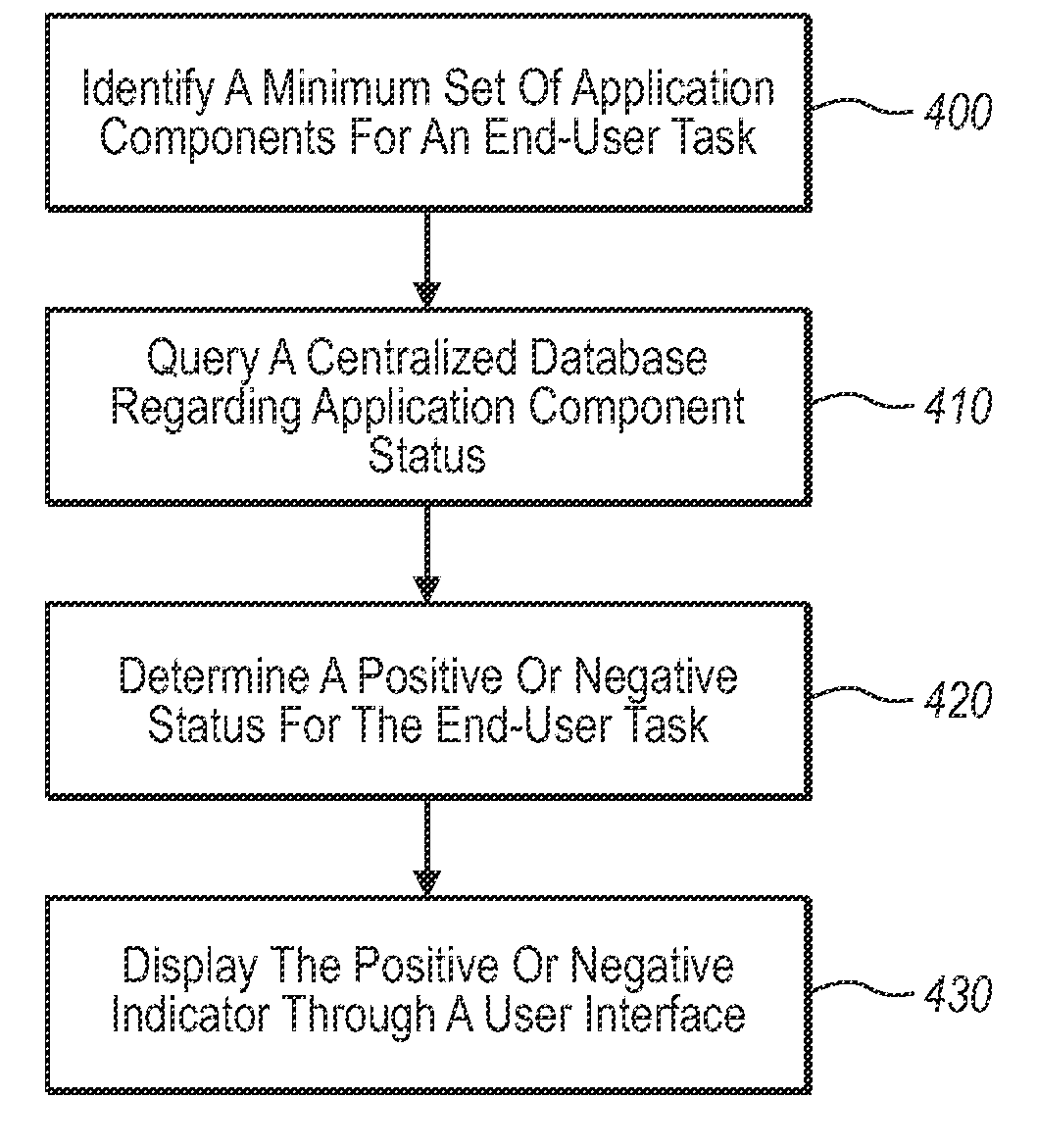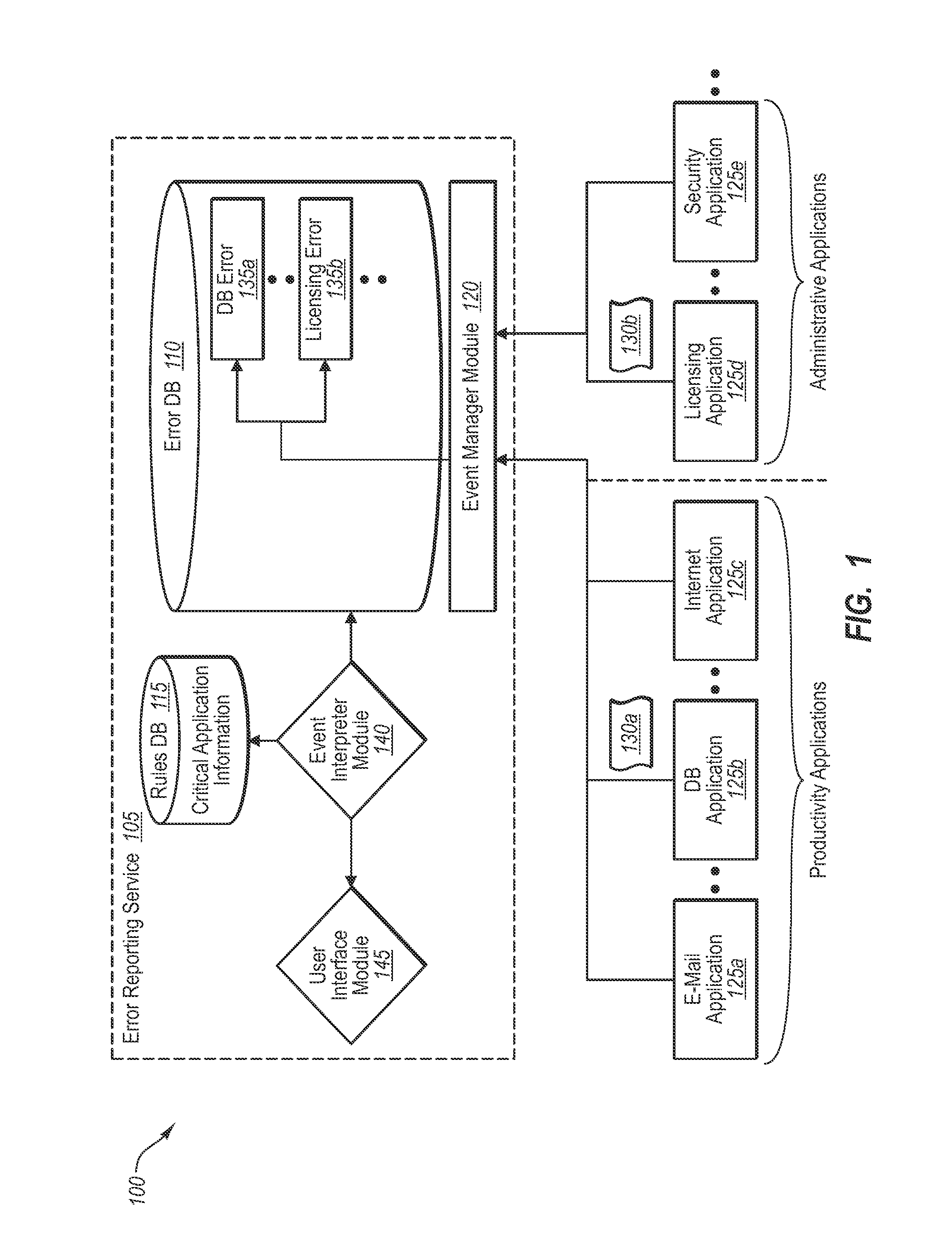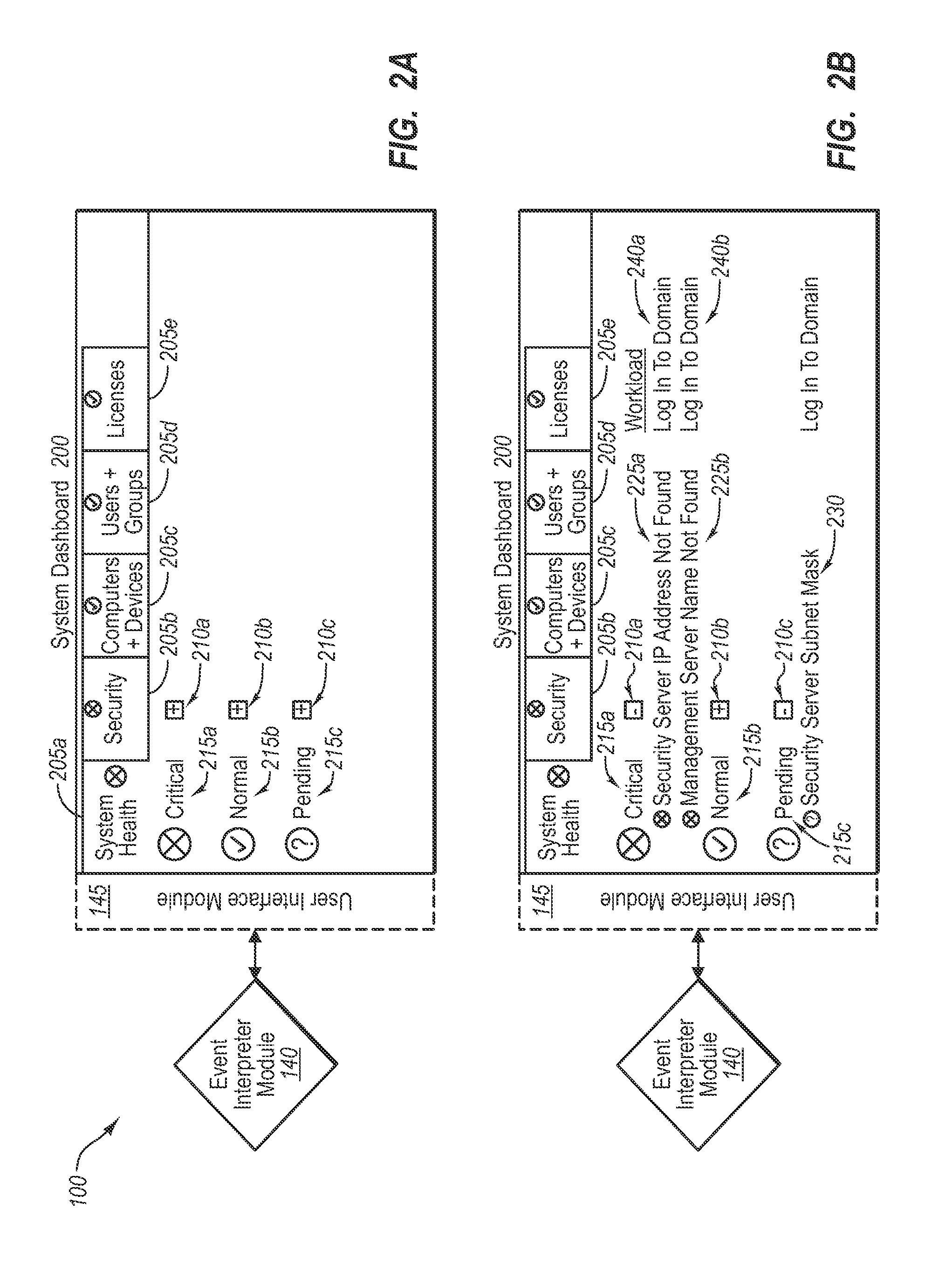Correlating complex errors with generalized end-user tasks
a technology for complex errors and end-user tasks, applied in the field of correlating complex errors with generalized end-user tasks, can solve the problems of difficult troubleshooting what exactly is happening, affecting other applications, application components, end-user tasks, etc., and achieves the effect of efficient reporting various computer system operability metrics and easy understanding
- Summary
- Abstract
- Description
- Claims
- Application Information
AI Technical Summary
Benefits of technology
Problems solved by technology
Method used
Image
Examples
Embodiment Construction
[0020]Implementations of the present invention extend to systems, methods, and computer program products configured to efficiently report various computer system operability metrics in a human-readable, easy to understand way. For example, one implementation of a system is configured to collect status reports (e.g., error reports) from one or more application programs into a centralized location, and interpret the error reports in terms of generalized, end-user tasks. The system then associates the generalized end-user tasks, such as sending and receiving email, or logging-in to a network, etc. with a positive or negative (or undetermined) designation. The system further includes one or more user interfaces (e.g., a dashboard) that continually display updated system health information, which indicates which generalized end-user tasks may be working properly, or otherwise implicated by problems identified with application components.
[0021]Accordingly, and as described more fully here...
PUM
 Login to View More
Login to View More Abstract
Description
Claims
Application Information
 Login to View More
Login to View More - R&D
- Intellectual Property
- Life Sciences
- Materials
- Tech Scout
- Unparalleled Data Quality
- Higher Quality Content
- 60% Fewer Hallucinations
Browse by: Latest US Patents, China's latest patents, Technical Efficacy Thesaurus, Application Domain, Technology Topic, Popular Technical Reports.
© 2025 PatSnap. All rights reserved.Legal|Privacy policy|Modern Slavery Act Transparency Statement|Sitemap|About US| Contact US: help@patsnap.com



